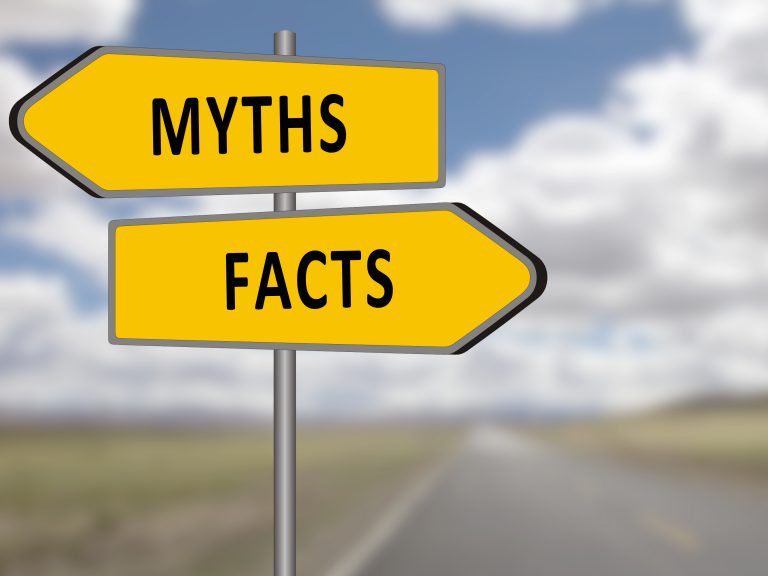Mortgage rates may fluctuate and requirements may change, but one thing remains constant: the dream of owning a home. Rents have gone through the roof recently, which has pushed even more homebuyers into house hunting. Owning a home has historically been a goal of many Americans and acquiring a mortgage has traditionally been the way to achieve that goal. But are you making decisions based on these common mortgage myths?
The Magic Number
No, we’re not talking about your credit score (though that is important). We’re talking about down payments. Nearly every first-time homebuyer will tell you that they’re either saving up for a down payment or that they can’t afford a home because they don’t have enough down payment funds. This couldn’t be further from the truth.
While a 20 percent down payment means a smaller loan amount and therefore owing less money, there are programs out there that allow homebuyers to put as little as 3.5 percent down, such as FHA.
It is important to be aware that if you aren’t able to put 20 percent down on a conventional loan, you will need to pay Private Mortgage Insurance (PMI). These payments are essentially insurance for your loan until you reach a certain percentage of your mortgage paid. Payments are typically $1,000 per year per $100,000. So if you take a loan out for $200,000, you will likely pay $2,000 in mortgage insurance.
Pre-Qualification vs. Pre-Approval
Often considered interchangeable, pre-qualification and pre-approval are indeed different and noticeably different at that. Pre-qualification suggests that you’ve met with a lender and had a conversation. Pre-approval on the other hand is the actual process of gathering your tax files, W-2s and other required documents. After this, the lender submits the file for review by an underwriter. The end result is that you’re pre-approved for a certain loan amount, which puts you ahead of the game when house hunting.
It’s important to distinguish between the two because, as Realtor.com explains, pre-qualification is relatively useless whereas pre-approval gives you buying power. Your pre-approval letter lets the seller know that a lender is ready to loan you a certain amount of money and that you’ve taken the necessary initial steps toward buying a home.
Credit Scores
You’ve worked hard to increase your credit score, but did you know that lenders don’t use your highest score? Your credit score comes from three sources—Equifax, TransUnion and Experian—and lenders take the middle score to qualify you for your mortgage. Applying with a partner? The lender will take both your middle scores and then use the lowest between the two.
The myth that lenders only consider your highest credit score is not only that, but it can also affect your rates. If your middle score is 650, your mortgage rates will be based on that score. This could mean significantly higher interest rates or not qualifying at all.
Honest Answers
Still curious about other myths out there or questioning what you thought to be true about mortgages? Come see us and we’ll explain the process and debunk any other mortgage myths you may have. We want you to be able to purchase your dream home and that starts with knowing the process.

